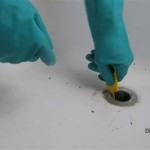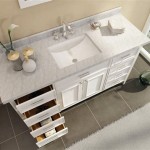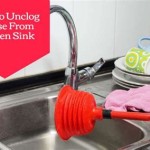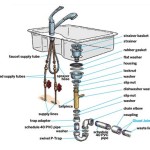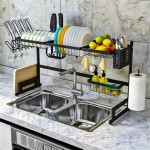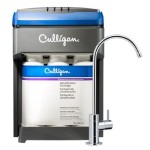Under Sink Reverse Osmosis System Reviews: A Comprehensive Guide
Reverse osmosis (RO) systems offer a compelling solution for households seeking purified drinking water directly from their kitchen tap. Among the various types available, under-sink RO systems represent a popular choice due to their space-saving design and ability to provide a dedicated source of filtered water without compromising valuable counter space. This article provides a comprehensive review framework for evaluating under-sink RO systems, examining key features, performance metrics, and considerations for choosing the best system for specific needs. We will delve into various aspects, including filtration effectiveness, maintenance requirements, installation process, and overall value proposition, providing a well-rounded understanding of what to look for in an under-sink RO system.
The primary function of an under-sink RO system is to remove impurities from water, delivering cleaner, better-tasting water for drinking, cooking, and other household uses. These systems typically consist of multiple stages of filtration, each designed to target specific contaminants. Sediment filters remove particulate matter like sand and rust, while carbon filters address chlorine, chloramine, and volatile organic compounds (VOCs) that contribute to unpleasant tastes and odors. The heart of the system is the reverse osmosis membrane, which forces water through a semi-permeable membrane, effectively removing dissolved solids, heavy metals, and other contaminants down to the molecular level.
Choosing the right under-sink RO system requires careful consideration of several factors. Water quality in different regions varies significantly, necessitating a system that addresses specific concerns. For example, areas with hard water may require a system with enhanced scale reduction capabilities. Similarly, regions with elevated levels of lead or arsenic should prioritize systems certified to remove these contaminants effectively. Evaluating independent reviews, manufacturer specifications, and certifications from reputable organizations like NSF International can help make an informed decision. This article will guide the reader through the process of assessing these factors and understanding the key performance indicators of under-sink RO systems.
Understanding Filtration Performance and Certification
The effectiveness of an under-sink RO system hinges on its filtration performance. Several aspects contribute to this, including the number of filtration stages, the quality of the filters used, and the system’s ability to remove specific contaminants. A typical RO system incorporates pre-filtration, the RO membrane stage, and a post-filtration element, often a carbon filter, to polish the water before it reaches the faucet. The pre-filters protect the RO membrane from premature clogging by removing larger particles and chlorine, extending its lifespan and maintaining optimal performance.
The RO membrane itself is the critical component responsible for removing the majority of contaminants. Its pore size is incredibly small, effectively blocking dissolved solids, bacteria, viruses, and other impurities. The efficiency of the RO membrane is measured by its rejection rate, which indicates the percentage of contaminants it removes. A higher rejection rate signifies better filtration performance. Reputable manufacturers typically provide data sheets outlining the rejection rates for specific contaminants, allowing consumers to compare different systems.
Beyond the RO membrane, the quality of the other filters plays a significant role. High-quality sediment and carbon filters provide superior contaminant removal and have a longer lifespan, reducing the frequency of filter replacements and minimizing maintenance costs. Look for filters made from certified materials that meet NSF standards. NSF certification indicates that a product has been independently tested and verified to meet specific performance standards for contaminant reduction, material safety, and structural integrity. Consulting the NSF website or the manufacturer's product specifications will confirm relevant certifications.
When evaluating filtration performance, it is crucial to consider the specific contaminants present in the water supply. A water quality test can identify these contaminants and their concentrations, allowing for the selection of an RO system specifically designed to address these concerns. For instance, a system certified to remove lead and arsenic may be a priority for areas with known contamination issues. Similarly, a system with a specialized filter for chloramine removal may be preferred in areas where chloramine is used as a disinfectant.
Evaluating System Design and Installation
The design of an under-sink RO system impacts its ease of installation, space requirements, and overall convenience. Compact systems are ideal for smaller kitchens with limited under-sink space. Modular designs, where filters are easily accessible, simplify filter replacements and maintenance. The system's dimensions, plumbing connections, and mounting hardware should all be considered during the evaluation process.
Installation can be a significant factor. Some systems are designed for DIY installation, while others require professional installation. DIY-friendly systems typically come with detailed instructions, color-coded tubing, and quick-connect fittings, making the process relatively straightforward for individuals with basic plumbing skills. However, improper installation can lead to leaks, reduced performance, and potential damage to the system or surrounding area. If unsure, professional installation is recommended.
The system's storage tank is another design consideration. RO systems produce purified water relatively slowly, so a storage tank is necessary to provide an adequate supply on demand. The tank's size determines the amount of purified water available at any given time. Larger tanks are suitable for households with higher water consumption, while smaller tanks may suffice for smaller families or individuals. Tankless RO systems are also available, which filter water on demand, eliminating the need for a storage tank. These systems typically have a higher flow rate but may require more powerful pumps and higher electrical consumption.
The included faucet is also a key design element. Most under-sink RO systems come with a dedicated faucet that dispenses purified water. The faucet's design should complement the kitchen décor and provide a smooth, consistent flow of water. Look for faucets made from lead-free materials and with durable finishes to ensure long-lasting performance and safety. Some systems offer designer faucets with various finishes to match existing kitchen fixtures.
Assessing Maintenance Requirements and Costs
Maintaining an under-sink RO system is crucial for ensuring its continued performance and longevity. Regular filter replacements are essential to preventing clogging, maintaining water quality, and protecting the RO membrane. The frequency of filter replacements varies depending on the system, the quality of the filters, and the water quality. Sediment and carbon filters typically need to be replaced every 6 to 12 months, while the RO membrane typically lasts for 2 to 5 years.
The cost of filter replacements can add up over time, so it's important to consider the long-term maintenance costs when evaluating different systems. Some systems use proprietary filters that are only available from the manufacturer, which may be more expensive than standard filters. Systems that use standard-sized filters offer greater flexibility and potentially lower replacement costs. Setting reminders in a calendar or using the system’s built-in maintenance indicator (if equipped) can help ensure timely filter replacements.
Sanitizing the system is another important maintenance task. Over time, bacteria and other microorganisms can accumulate in the storage tank and tubing. Sanitizing the system at least once a year helps to prevent the growth of these contaminants and maintain water quality. Sanitization typically involves using a mild bleach solution to disinfect the system. The manufacturer's instructions should be followed carefully to ensure proper sanitization and avoid damaging the system.
Furthermore, monitoring the system's performance is important. Changes in water taste, flow rate, or pressure can indicate a problem with the system. Regular checks for leaks and unusual noises can help identify potential issues early on. Addressing these issues promptly can prevent further damage and ensure continued optimal performance. Consulting the manufacturer's troubleshooting guide or contacting customer support can provide assistance in diagnosing and resolving problems.

11 Best Under Sink Reverse Osmosis Systems In 2024 Lab Tested Reviewed Youtube

2024 Reviews Guide How To Choose The Best Ro System

Apec Water Systems Essence Premium Quality 5 Stage Under Sink Reverse Osmosis Drinking Filter System Roes 50 The Home

Nu Aqua Efficiency Series Tankless 800gpd Alkaline Remineralization Re

Ao Smith Ro Filter System Under Sink Reverse Osmosis Installation

Reviews For Ispring Maximum Performance Under Sink Reverse Osmosis Drinking Water Filtration System With Booster Pump Pg 1 The Home

7 Best Reverse Osmosis Systems Of 2024

Pdp Standard Description Template

Reviews For Apec Water Systems Ultimate Premium Quality Fast Flow 90 Gpd Under Sink Reverse Osmosis Drinking Filter System Pg 1 The Home

Review Whirlpool Wher25 Ro System Tralfaz
